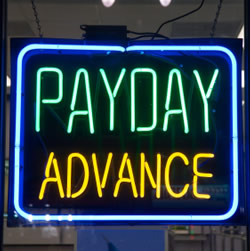The Consumer Financial Protection Bureau was created after the financial crisis of 2008-09 to bring basic rules of fairness and transparency to the world of lending and banking.
In its short life, the Bureau has returned nearly half a billion dollars to consumers cheated by credit card companies including Discover and American Express; laid down rules to end the era of mortgages designed to rake in up-front fees before they self-destruct; established a special team of advocates and investigators to guard servicemembers and veterans against financial scams and illegal foreclosures; and warned auto lenders that they will be held accountable for practices that lead to more expensive credit for African Americans, Latinos, women or seniors.
In addition to its rule-writing and enforcement responsibilities, the Bureau takes complaints. It’s the place to go for anyone with a problem involving a mortgage, private student loan, credit card, bank account or service, consumer loan (such as a car loan), money transfer, or credit report. (Debt collection and payday will soon be added to the list.)
Complaints can lead to action: the CFPB has helped consumers secure millions of dollars in monetary relief, while helping others in non-monetary ways – by getting their credit scores corrected, for example. Although not every situation is set straight, submitting a complaint also helps the Bureau keep track of recurring problems that may call for new rules, improved supervision of financial industry practices, or steps to put better information in front of consumers.
How to Submit a Complaint
It’s an easy process. You can submit online or call a toll-free number, 855-411-CFPB (2372). The Bureau answers questions and accepts complaints in more than 180 languages over the phone.
Answers to common questions – “What’s a Stafford loan?” “What is a balance inquiry fee?” “How long does negative information remain on my credit report?” – can be found on the Ask CFPB page. For Spanish speakers, the CFPB has a new interactive web page, designed for phones and mobile devices as well as computers.
How It Works
The Bureau forwards each complaint to the appropriate company. Companies have 15 days to respond and are expected to close all but the most complicated complaints within 60 days. You’ll be alerted as soon as a company’s response comes in, and you’ll have a chance to review the response and provide feedback.. The CFPB uses your feedback, along with other information such as the timeliness of the response, to help prioritize complaints for investigation. You can check the status of your complaint online at any time.
Basic complaint data, including the names of the companies involved and whether a company has responded to the consumer’s satisfaction, goes into a public and searchable database. Anyone can see what kinds of complaints have been submitted, against which companies, and how often consumers have gotten relief. Researchers, reporters, financial companies, and the CFPB itself also make use of the database. Based on complaint trends, the Bureau may decide to study a general problem more closely, even if it does not involve a clear violation of the law.

